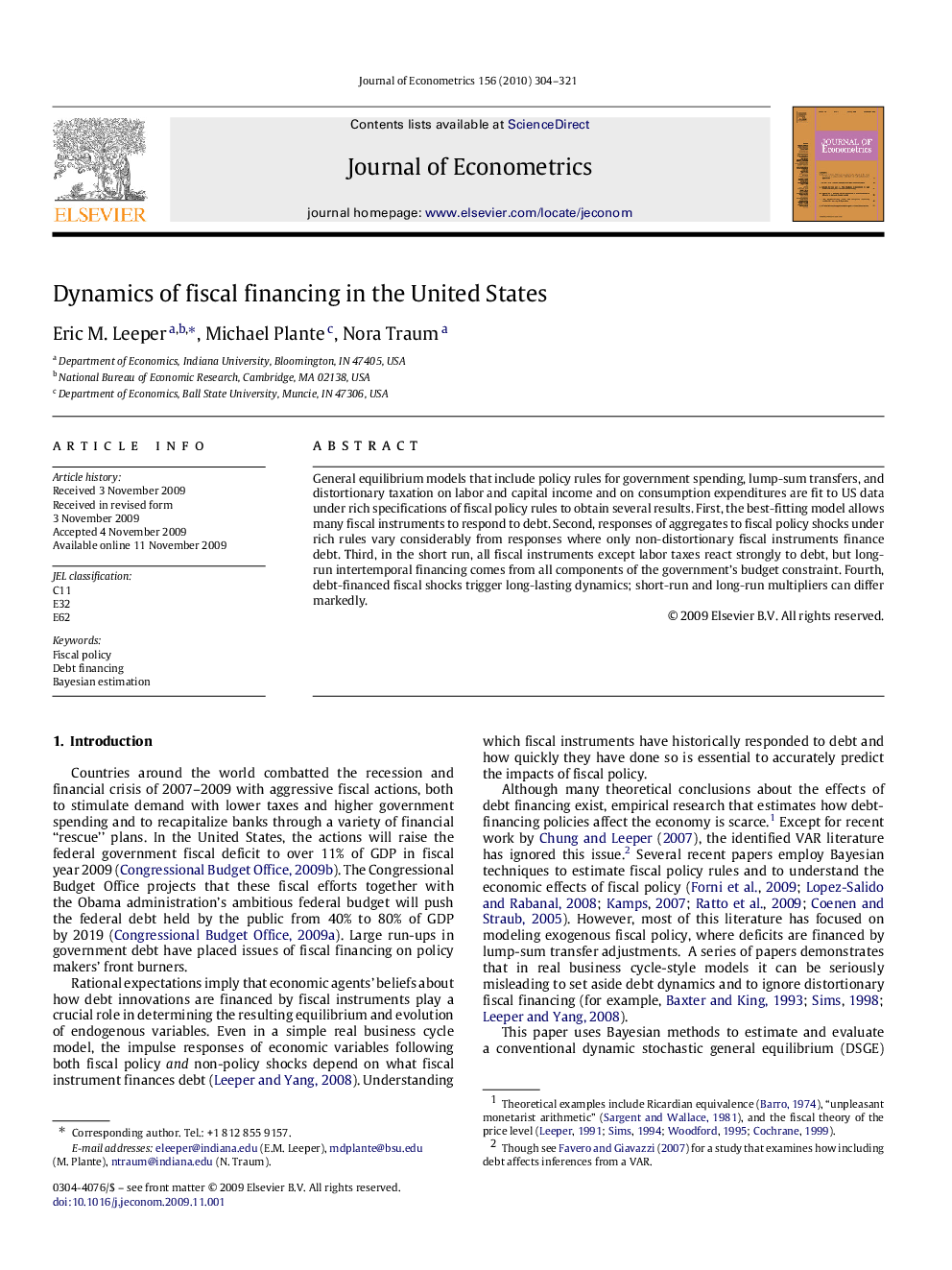| Article ID | Journal | Published Year | Pages | File Type |
|---|---|---|---|---|
| 5096958 | Journal of Econometrics | 2010 | 18 Pages |
Abstract
General equilibrium models that include policy rules for government spending, lump-sum transfers, and distortionary taxation on labor and capital income and on consumption expenditures are fit to US data under rich specifications of fiscal policy rules to obtain several results. First, the best-fitting model allows many fiscal instruments to respond to debt. Second, responses of aggregates to fiscal policy shocks under rich rules vary considerably from responses where only non-distortionary fiscal instruments finance debt. Third, in the short run, all fiscal instruments except labor taxes react strongly to debt, but long-run intertemporal financing comes from all components of the government's budget constraint. Fourth, debt-financed fiscal shocks trigger long-lasting dynamics; short-run and long-run multipliers can differ markedly.
Related Topics
Physical Sciences and Engineering
Mathematics
Statistics and Probability
Authors
Eric M. Leeper, Michael Plante, Nora Traum,
